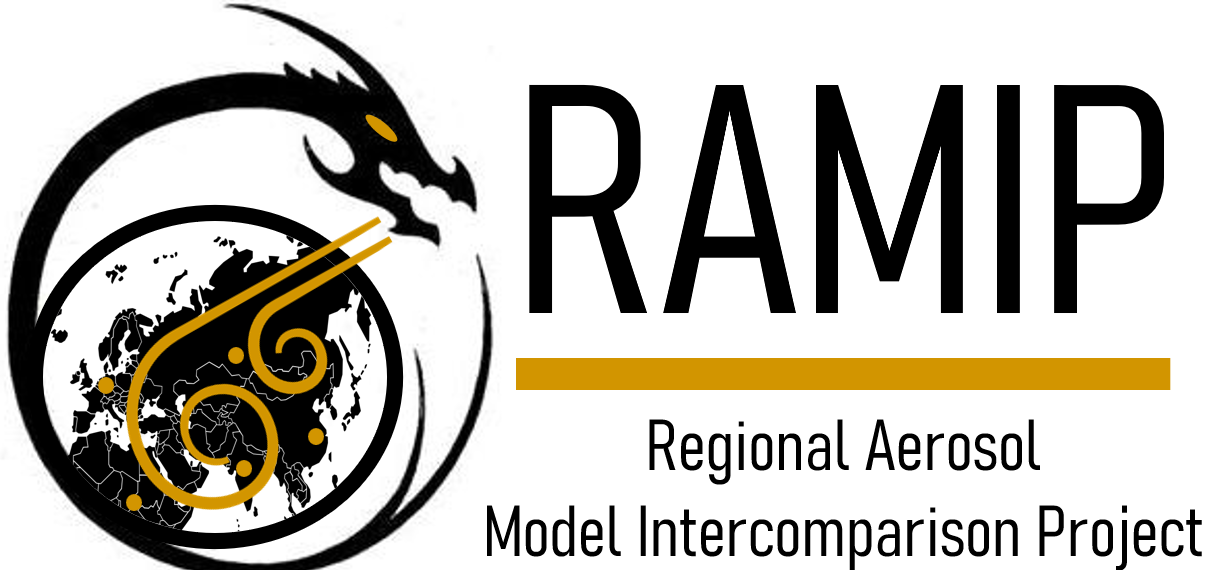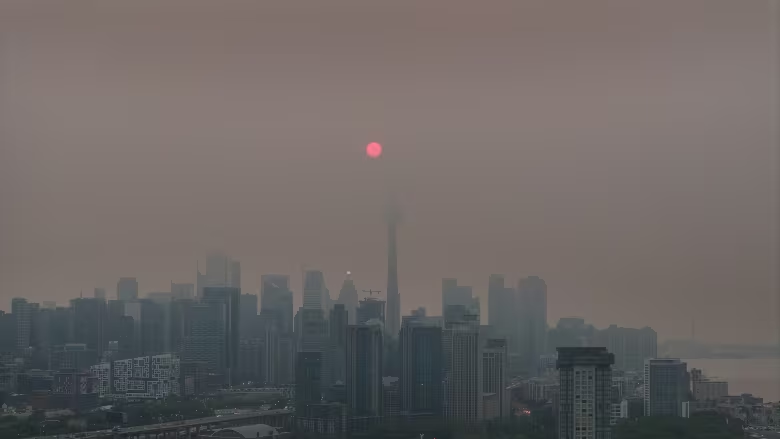CP4C Projects
The Regional Aerosol Model Intercomparison Project (RAMIP)
Point of Contact: Luke Fraser-Leach (luke.fraserleach@mail.utoronto.ca)
Changes in anthropogenic aerosol emissions have significantly impacted global and regional temperature, precipitation, and other climate trends, acting as a major driver of decadal precipitation patterns in Asia and Africa. These influences are expected to persist and potentially intensify in the coming decades. However, substantial uncertainties in emission pathways, radiative forcing, and the resulting dynamic responses make anthropogenic aerosols crucial to understanding the variability of near-term climate projections, especially at regional scales, highlighting the need for better constraints on these factors.
RAMIP is an international collaboration to study regional aerosol emissions changes in near-term model projections in multiple atmospheric and Earth-system models. CanESM is contributing to the RAMIP project, facilitated by CP4C.
The RAMIP experiments aim to investigate the sensitivities to aerosol type and location, offering enhanced constraints on uncertainties related to aerosol radiative forcing and the dynamic responses to aerosol changes. The core experiments will evaluate the impacts of varying future global and regional aerosol emission trajectories through 2051, focusing on Africa and the Middle East, East Asia, North America and Europe, and South Asia. Optional experiments will explore the nonlinear effects of different emission locations and aerosol types within this future trajectory. All experiments are intended to be conducted using 6th Climate Model Intercomparison Project (CMIP6) generation models, initialized from the CMIP6 historical experiments, allowing for comparisons with current projections.
Some preliminary results from this project are shown below alongside results from other models.
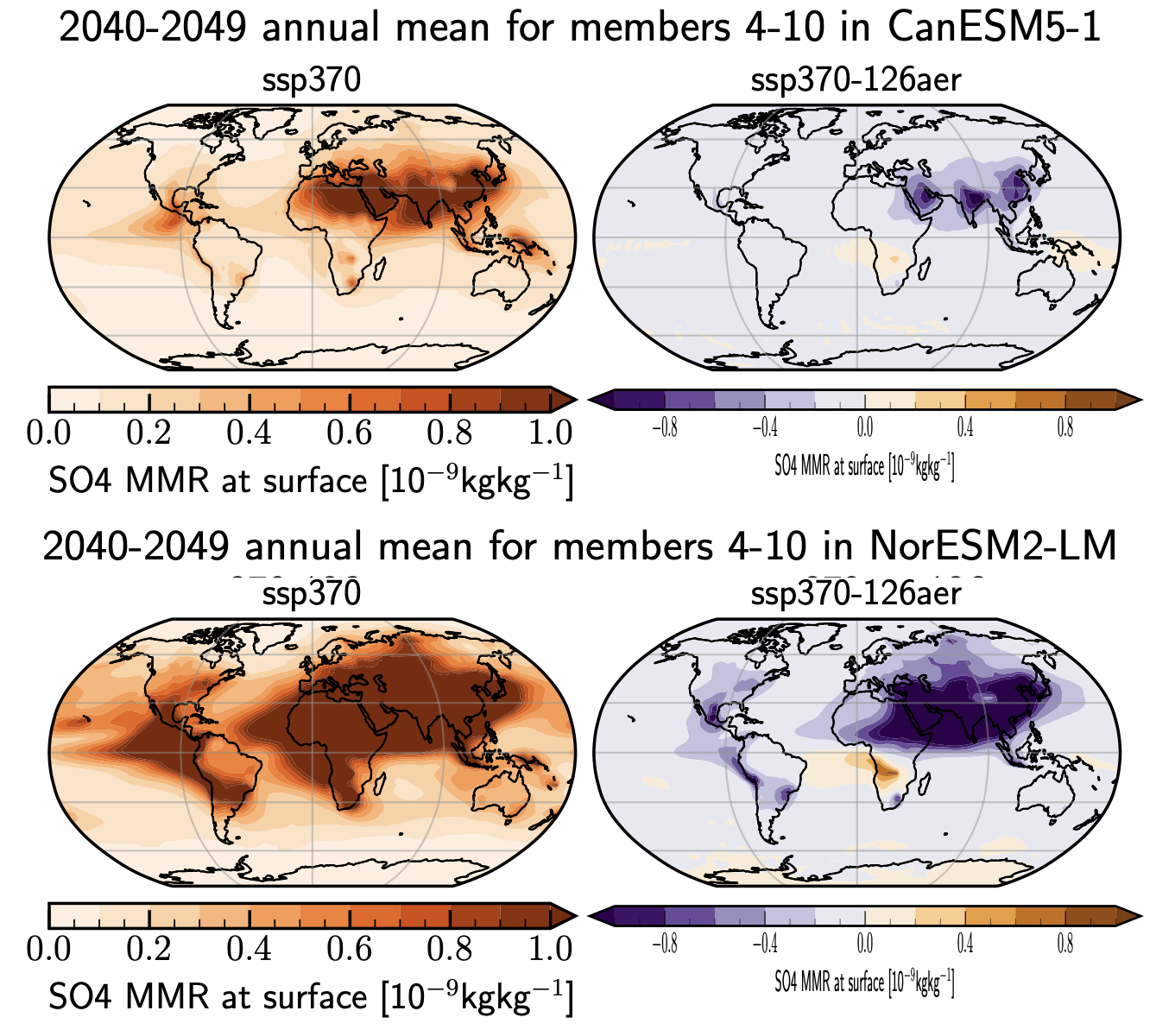
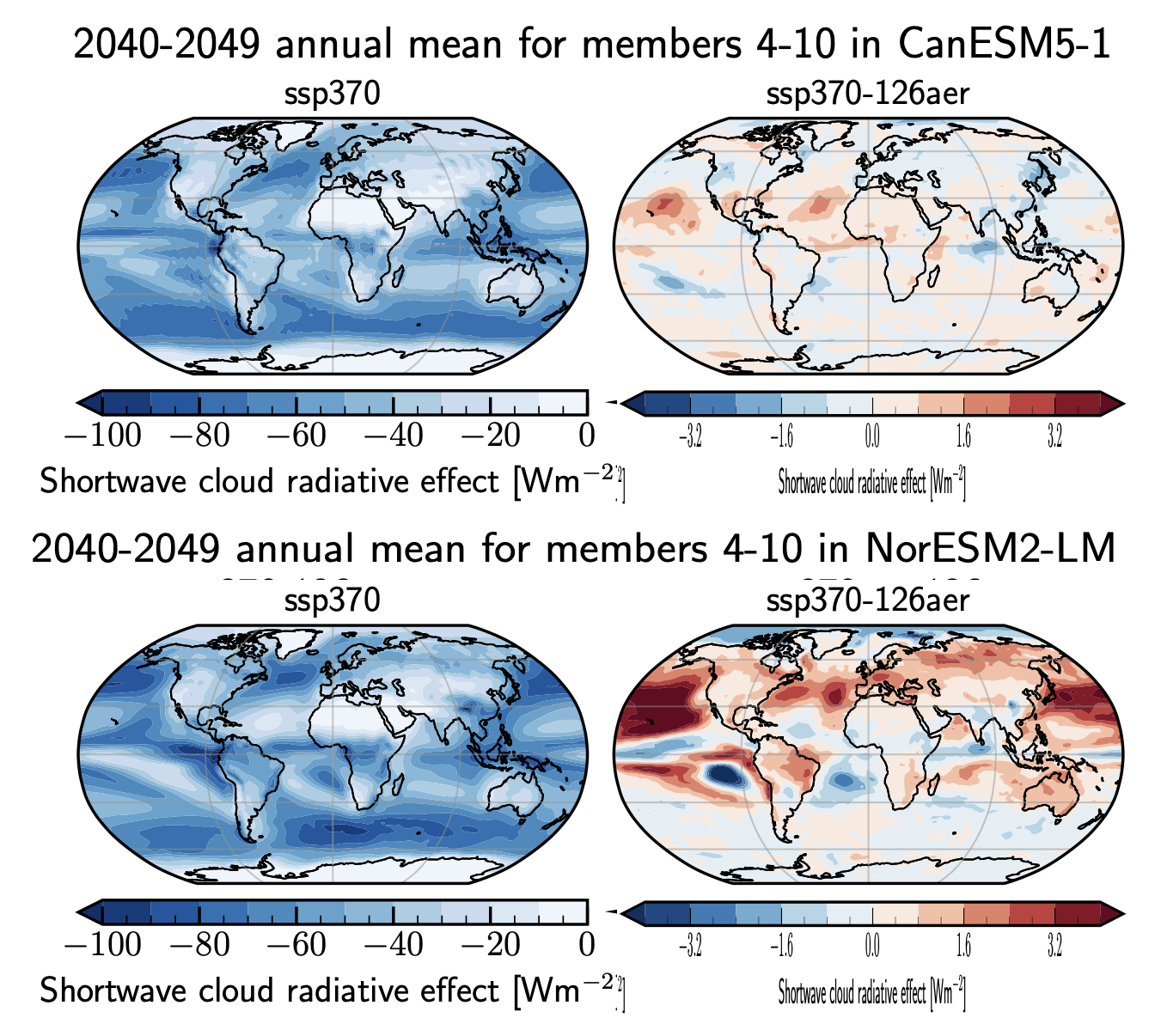
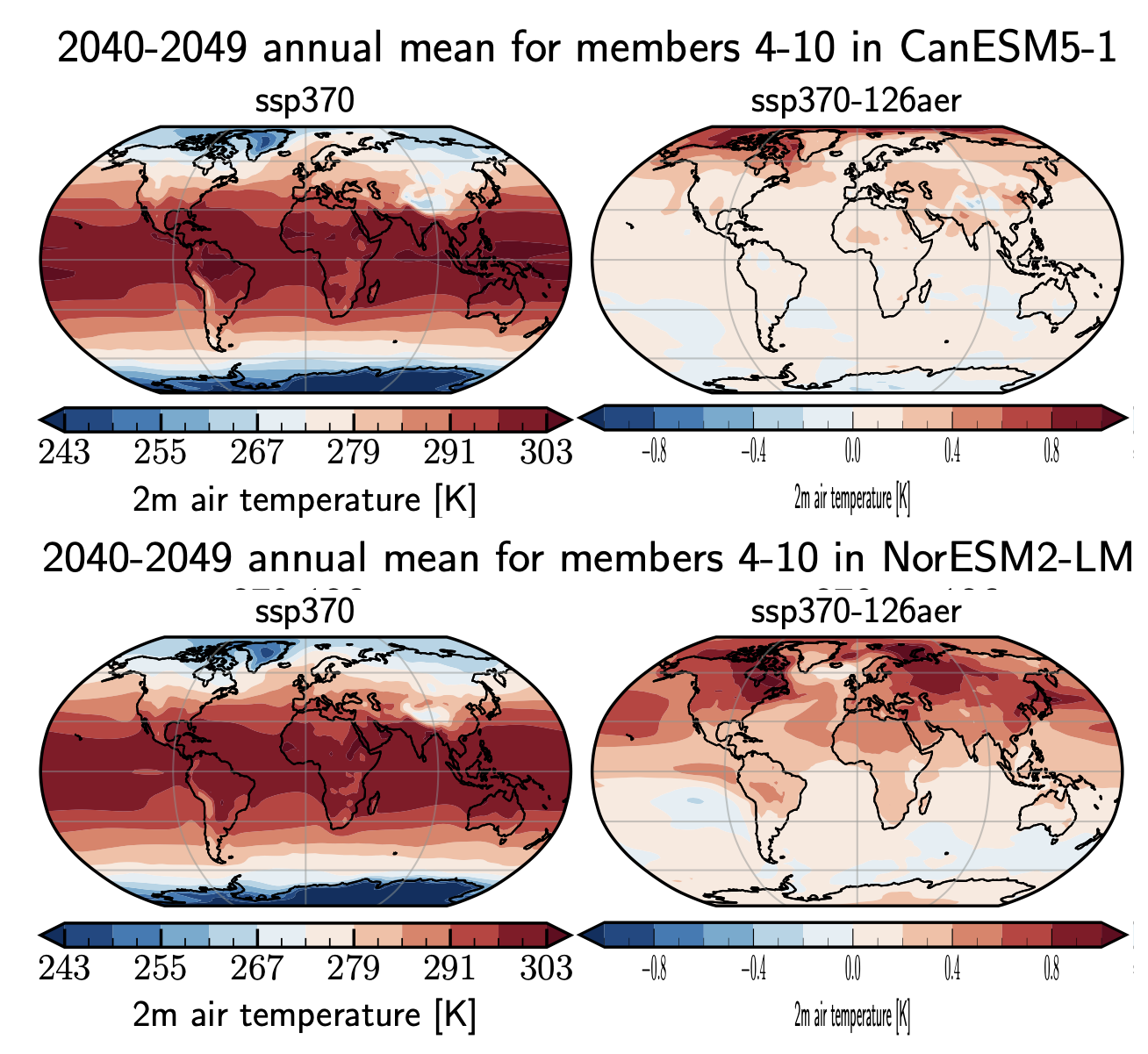
Left to right: Comparison of SO4 concentrations, shortwave cloud effects, and surface temperature in CanESM5 and NorESM2-LM.
Modelling of Nuclear Winter Scenarios
Point of Contact: Ansen Cheung (ansen.cheung@mail.utoronto.ca)
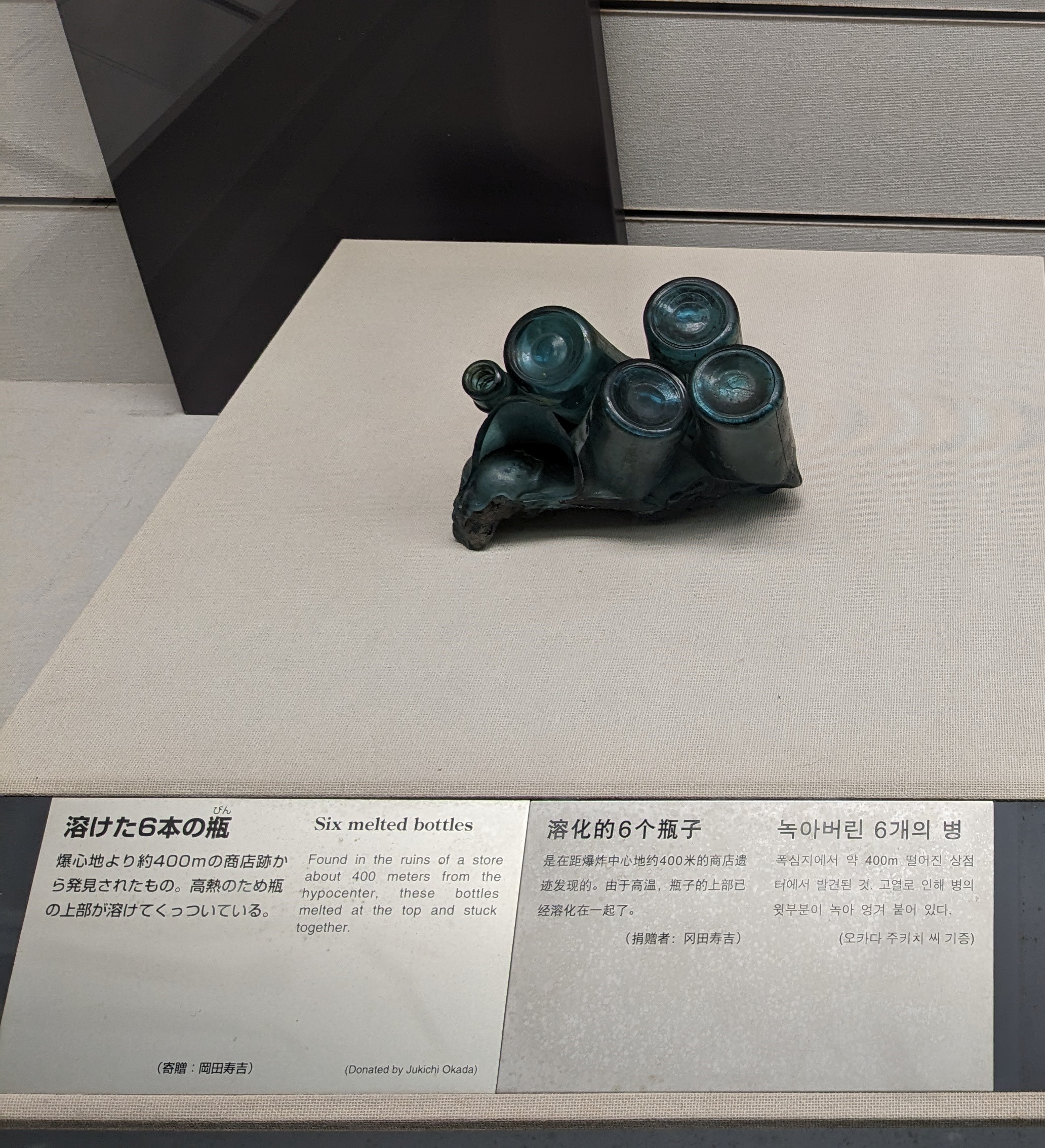
Caption: Six melted bottles that were found about 400 meters from the hypocenter of the Nagasaki nuclear explosion. Picture taken at the Nagasaki Atomic Bomb Museum, with permission.
Although global nuclear arsenals have shrunk since the Cold War, global society continues to face the risk of a global or regional nuclear war with rising geopolitical tension. In a hypothetical nuclear war scenario, along with the devastating local impacts, firestorms that are triggered at targeted urban centers are capable of injecting aerosols into the upper troposphere - lower stratosphere. The aerosols, which are estimated to be mostly comprised of black carbon (BC), can be transported and spread globally. They can interact with incoming solar radiation, locally heat the atmosphere, and cool the surface for years. Consequently, shortage in global food supply, famine, and further conflicts could be caused.
The climate effects of nuclear war have been studied for a few scenarios using global climate models. However, considerable uncertainties remain in the drivers of the scenarios as well as the uncertainties in the climate response owing to differences in model physics and parameterizations. Through CP4C, CanESM is used to constrain the uncertainties as part of a collaborative effort supported by the US Future of Life Institute (FLI).
In this project, a range of scenarios will be simulated using CanESM to quantify the sensitivity of the response in the model. An experiment will explore the effects of the inclusion of organic carbon (OC), which has very different optical properties compared to BC, has previously been omitted in the studies, but has been shown to play an important role in aerosol lifetime and radiative balance. The climate effects to various BC-to-OC ratios in plumes will be evaluated. Comparisons of the results will be drawn across different models with other research groups to constrain model structural uncertainties. The results will also be shared with other research groups to drive crop and fishery models so that the impacts on food availability following hypothetical nuclear conflicts can be studied.
Some preliminary results from this project are shown here.


Caption: Global BC burden timeseries in the scenarios with a total of 20-Tg BC emission (BC20) and with a total of 20-Tg BC plus 8-Tg OC emission (BC20OC08).
Caption: Surface temperature anomaly in DJF in the middle 10 years of the simulations for BC20. Stippling indicates changes significant at 95% confidence level using a t-test.
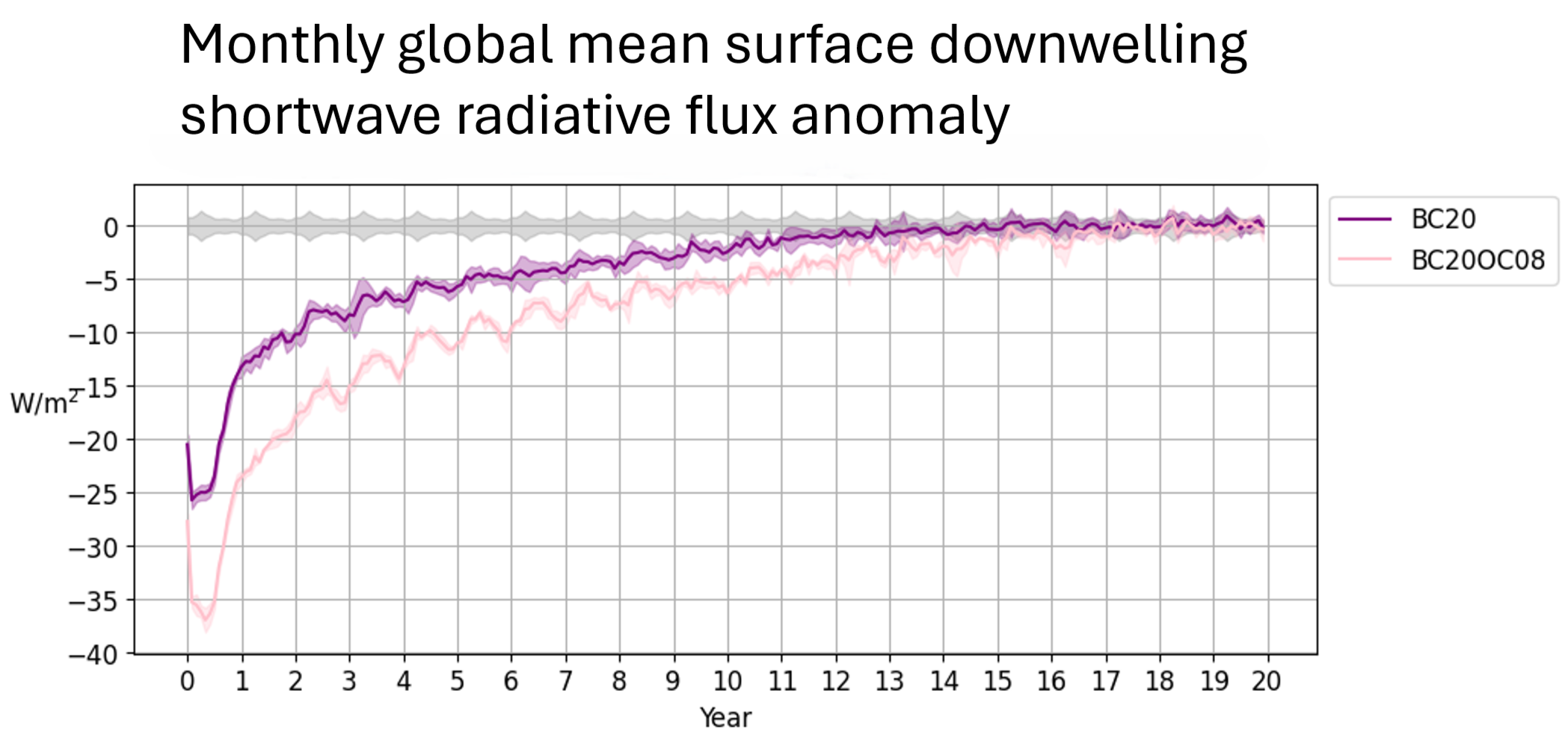
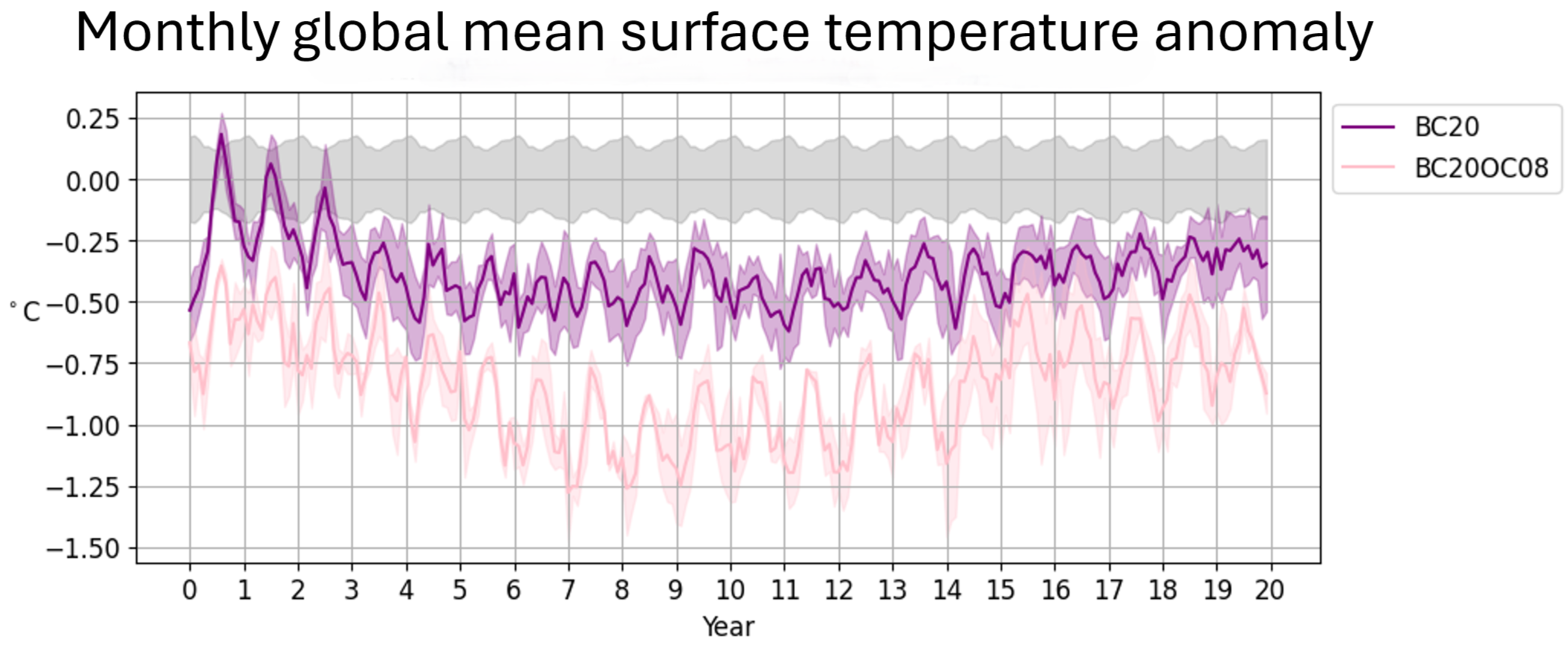
Caption: Monthly global mean anomaly of (Left) surface downwelling shortwave radiative flux and (Right) surface temperature for the two scenarios. Shading indicates one climatological standard deviation for climatology and one standard deviation for BC20 and BC20OC08.
